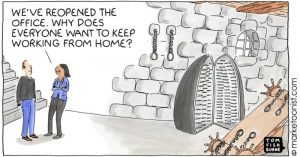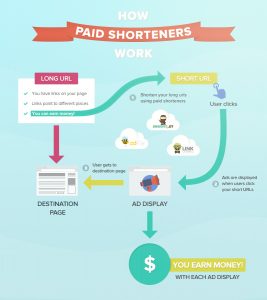
It may be hard to believe with much of the country still sweltering in the 90’s, but the dog days of summer are near.
A cursory glance at your Facebook feed confirms this as summer vacation photos give way to first day of school pics of shiny faces wearing their new school togs. Vacations are behind us and it’s time to get back into the business routine.
But, is your business ready for summer to end?
Many of us working in marketing and social media see a natural slump during the summer months:
- Website traffic declines noticeably
- Social feeds take on a more casual feel with less serious content
- Content marketing drags as fewer posts appear (sorry if you missed me last week, but I truly enjoyed my annual pilgrimage to the beach)
- Fewer meetups and networking events on your calendar
- And more
Well, it’s time to wake up from your hibernation and get back to work!
Here’s a list of things to review as you get ready for the busy year ahead:
Update your website
If it’s been awhile since you really looked at your website, it may be time to update that tired old theme for a spanking new one.
Here’s what’s out:
- Flash
- Autoplay video
- Sliders
- Mobile sites
- Crowded pages
- and more
What’s in:
- Responsive design
- HTML 5/ CSS 3
- Multimedia
- Parallax pages
- White space
- Static home pages
- Less advertising
- More images; higher quality, custom
- Hidden main menus behind a hamburger

- Fast load times and performance enhancements
- and more
Thanks to The Next Web for some of these predictions on the future of web design.
Content marketing
Content is big and that’s not changing any time soon.
So, if you don’t have a content marketing calendar to help keep your content creation/ curation on target to publish at least once a week, there’s no time like the present to make one.
It used to be that short content was the norm (300 to 600 words), now content must be longer — 1200 – 2000 words — to achieve good SEO. The notion is that short content doesn’t have a lot of value to readers. Now, there are exceptions, but longer content is taking over.
Big background images are giving way to more images throughout the post to illustrate points you’re making with words. Commonly, content marketers used a large image with the content title superimposed over it. Today, the big images are gone and the title stands alone — which I happen to like better.
Speaking of text, BIG text is in and custom fonts are also in. To help, Google Fonts contains thousands of options so you’re not confined to just a few common fonts. Go wild with one of these or, if your budget allows, have a font created to brand your site.
Mixing fonts is also in. Canva, my go-to provider for custom images and presentation slides, provides a great resource on how to effectively combine fonts into your design.
Good content marketing involves more than words and pretty pictures. Multimedia is the key to effective content marketing and will likely grow in importance as more consumers move toward mobile rather than desktop and laptop platforms.
SEO
While some aspects of SEO still reside within the coding, content is much more important for SEO than other website aspects. Content is the major driver in search traffic, especially when you include optimizing social signals, keywords, link bait, and other content related marketing tactics. Keyword stuffing and other SEO content techniques will get a penalty today, rather than a bump in SEO.
Mobile-first is also an important SEO ranking factor. If you haven’t done it already, Google offers a great tool for checking mobile-friendliness.
The issue of links is perhaps the single biggest change in SEO. Previous practices to get links are seen by Google as very spammy and won’t buy you much SEO value. Instead, Google is ranking based on implied links — mentions of your brand — and nofollow links matter as much as follow ones do.
Speaking of links, using links to authoritative sites is good for ranking just like using citations gives credence to your work offline. Sprinkling your content with such links shows Google you’re doing your research to provide better content and playing nice in terms of copyright laws.
SEO continues to be more about marketing, than programming. Building relationships with customers, influencers, and building collaborations have a greater impact on SEO than anything you can tweak with the code.
Analytics
I’m amazed at the number of webmasters and marketers who ignore metrics and just keep plugging along like this important part of digital marketing has no value.
Wrong.
 Metrics have never been more important than they are today. If you don’t have a sound digital analytics strategy, my advice would be to consume everything on Avinash Kaushik’s blog, Occam’s Razor.
Metrics have never been more important than they are today. If you don’t have a sound digital analytics strategy, my advice would be to consume everything on Avinash Kaushik’s blog, Occam’s Razor.
If you read only one post on analytics, I recommend this one.
The key take-away from his post is summarized in this one image.

To make life easier, Twitter, Facebook, and Pinterest offer great analytics tools to help you manage and optimize your social shares and engagement. Google Analytics track your website data and can even handle imported data from your mobile apps and other tools to help you optimize other aspects of your digital marketing strategy.
Speaking of Google Analytics, enhancements to the platform offer vast improvements in monitoring and tracking. Additions such as demographics, interests, and cohort analysis provide rich information about target segments and allow you to view performance based on specific segments.
Crafting a comprehensive analytics plan now, while things are still a little slow, positions you for expansion when everyone comes back after Labor Day.
Other digital marketing trends to watch
Wearables like watches and glasses
Slow consumer adoption hampered by high prices and low perceived advantage may be a thing of the past. Apple watch may be the tipping point to speed adoption of wearables. The marketing opportunities from these devices are unclear, but being a first mover into this space offers advantages to brands.
Other wearables already have high adoption, like Fitbit and other fitness tracking devices.
New social platforms
Facebook and Twitter are loosing their appeal — especially to millennials. Newer social platforms like Snapchat (which isn’t all that new anymore) and live-streaming platforms like Meerkat and Periscope capture new users every day and may replace some of these old standbys over time — remember MySpace?
Search engine diversity
Google is slowly losing it’s dominance in search, according to Bloomberg. While still over 75%, its share is down nearly 5% over last year while other search engines, like Yahoo, are gaining. New entrants like Facebook search and Duck Duck Go (which offers more privacy because it doesn’t track your searches) are gaining ground. In fact, we just built and launched a new product containing the Duck Duck Go search engine to reinforce our commitment to privacy — check it out at: http://hexsee.com and download for free in the Chrome Web Store.
IoT
The Internet of Things allows collection of tons of data from internet-enabled devices like refrigerators, thermostats, and even cars and wearables. The possibilities inherent in all this data remain to be seen, but, with adoption rates around 28%, according to an Adobe survey, first movers will see rewards from mining this data soon.
What to do now?
Obviously, you need to explore these trends, prioritize implementation of changes to position your digital marketing for what’s coming and put some content in the bank for emergencies. You should also take this time to polish off your digital marketing strategy for the coming year. After all, the holidays are just around the corner.
(240)






